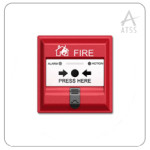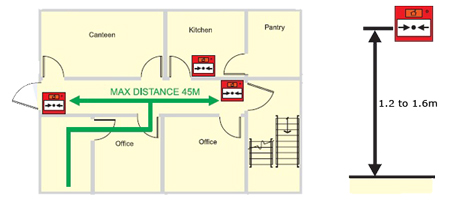SECURITY SYSTEMS SOLUTIONS
-
 Access Control
Access Control
-
 Asset Tracking
Asset Tracking
-
 Automatic Door
Automatic Door
-
 Baggage Scanner
Baggage Scanner
-
 Bell Timer
Bell Timer
-
 Boom Barrier
Boom Barrier
-
 BMS
BMS
-
 Burglar Alarm
Burglar Alarm
-
 Canteen Management
Canteen Management
-
 CCTV ANPR
CCTV ANPR
-
 CCTV People Counting
CCTV People Counting
-
 CCTV Surveillance
CCTV Surveillance
-
 CCTV Video Analytics
CCTV Video Analytics
-
 Central Vacuum Cleaner
Central Vacuum Cleaner
-
 DFMD
DFMD
-
 Electric Fence
Electric Fence
-
 EAS
EAS
-
 Fire Alarm
Fire Alarm
-
 Fire Hydrant
Fire Hydrant
-
 Fire Suppression
Fire Suppression
-
 Flap Barrier
Flap Barrier
-
 Garage Door
Garage Door
-
 Gas Detector
Gas Detector
-
 Gate Automation
Gate Automation
-
 GSM Communicator
GSM Communicator
-
 Guard Monitoring
Guard Monitoring
-
 HHMD
HHMD
-
 Home Automation
Home Automation
-
 Home Theatre
Home Theatre
-
 Hotel Lock
Hotel Lock
-
 ID Cards
ID Cards
-
 Lighting Automation
Lighting Automation
-
 Network & Communication
Network & Communication
-
 Nurse Calling System
Nurse Calling System
-
 Occupancy Sensor
Occupancy Sensor
-
 PA Systems
PA Systems
-
 Payroll
Payroll
-
 Road Blocker
Road Blocker
-
 Smart Lock
Smart Lock
-
 Time Attendance
Time Attendance
-
 Tripod Turnstile
Tripod Turnstile
-
 UVSS
UVSS
-
 Vehicle Tracking
Vehicle Tracking
-
 Video Door Phone
Video Door Phone
-
 Parking Management System
Parking Management System
-
 Visitor Management
Visitor Management
-
 Wireless Communication
Wireless Communication
A manual call point (MCP) is a device that allows a person to manually initiate an alarm or emergency signal in a building or facility. It is typically located near exits or in other strategic areas, and can be activated by breaking a glass panel or pressing a button. The signal is then sent to a control panel or monitoring system, which can trigger a response from emergency personnel or security personnel. MCPs are commonly used in fire alarms and security systems.
People can often still detect a fire long before automatic fire detectors; hence manual call points are important components of fire detection systems in occupied buildings to ensure timely evacuation in the case of fire. All call points should be approved to EN54-11, and should be of type A, that is once the frangible element is broken or displace the alarm condition is automatic.
Manual Call points should be mounted on all escape routes, and at all exit points from the floors of a building and to clear air. It should not be possible to leave the floor of a building without passing a manual call point, nor should it be necessary to deviate from any escape route in order to operate a manual call point.
Call points mounted at the exists from a floor may be mounted within the accommodation or on the stairwell. In multiple storey buildings where phased evacuation is to be used call points should be mounted within the accommodation to avoid activation of call points on lower levels by people leaving the building.
In order to provide easy access, call points should be mounted between 1.2 and 1.6m from the floor, and should be clearly visible and identifiable. The maximum distance anyone should have to travel in order to activate a manual call point is 45m, unless the building is occupied by people having limited mobility, or rapid fire development is likely, in which case the maximum travel distance should be reduced to 20m. Call points should also be sited in close proximity to specific hazards, for example kitchens or paint spray booths.
SECURITY SYSTEMS SOLUTIONS
-
 Access Control
Access Control
-
 Asset Tracking
Asset Tracking
-
 Automatic Door
Automatic Door
-
 Baggage Scanner
Baggage Scanner
-
 Bell Timer
Bell Timer
-
 Boom Barrier
Boom Barrier
-
 BMS
BMS
-
 Burglar Alarm
Burglar Alarm
-
 Canteen Management
Canteen Management
-
 CCTV ANPR
CCTV ANPR
-
 CCTV People Counting
CCTV People Counting
-
 CCTV Surveillance
CCTV Surveillance
-
 CCTV Video Analytics
CCTV Video Analytics
-
 Central Vacuum Cleaner
Central Vacuum Cleaner
-
 DFMD
DFMD
-
 Electric Fence
Electric Fence
-
 EAS
EAS
-
 Fire Alarm
Fire Alarm
-
 Fire Hydrant
Fire Hydrant
-
 Fire Suppression
Fire Suppression
-
 Flap Barrier
Flap Barrier
-
 Garage Door
Garage Door
-
 Gas Detector
Gas Detector
-
 Gate Automation
Gate Automation
-
 GSM Communicator
GSM Communicator
-
 Guard Monitoring
Guard Monitoring
-
 HHMD
HHMD
-
 Home Automation
Home Automation
-
 Home Theatre
Home Theatre
-
 Hotel Lock
Hotel Lock
-
 ID Cards
ID Cards
-
 Lighting Automation
Lighting Automation
-
 Network & Communication
Network & Communication
-
 Nurse Calling System
Nurse Calling System
-
 Occupancy Sensor
Occupancy Sensor
-
 PA Systems
PA Systems
-
 Payroll
Payroll
-
 Road Blocker
Road Blocker
-
 Smart Lock
Smart Lock
-
 Time Attendance
Time Attendance
-
 Tripod Turnstile
Tripod Turnstile
-
 UVSS
UVSS
-
 Vehicle Tracking
Vehicle Tracking
-
 Video Door Phone
Video Door Phone
-
 Parking Management System
Parking Management System
-
 Visitor Management
Visitor Management
-
 Wireless Communication
Wireless Communication



